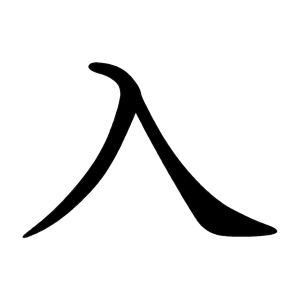入
- to enter, to let in, to put in;
Etymology
According to the Shuowen Jiezi (설문해자), the character 入 is a pictograph that represents the shape of something enclosing from top to bottom, symbolizing the meaning “inside” or “to enter.”
Another interpretation, based on ancient script forms, sees 入 as imitating the entrance of a primitive dwelling or cave—essentially the opening of a shelter that people would enter.
In Japanese shinjitai (modern simplified forms) and Simplified Chinese, the radical form of 入 has often been modified to resemble 人 (person) or other shapes (for example, in characters like 內/ 内 (inside), 全 (whole or complete)).
In Taiwan, however, they generally retain the original 入 form, except in specific cases like 兪 (also written 俞).
Characters with 入
4 strokes
6 strokes
8 strokes
Words that derived from 入
- 개입(介入)–interference; meddling
- 신입(新入)–newcomer
- 입각(入閣)–entry into the cabinet; being appointed as a cabinet member
- 입대(入隊)–joining an army; enlistment
- 입소(入所)–entrance; admission
- 입원(入院)–hospitalization
- 입장(入場)–admission; entrance
- 출입(出入)–going in and out; entry
- 투입(投入)–throwing in; inserting; investment; spending; hiring
入
들
입
deul
ip
Kangxi radical:11
Strokes:2
Unicode:U+2F0A
Cangjie input:
- 人竹 (OH)
Composition:
- ⿹ 乀 丿
